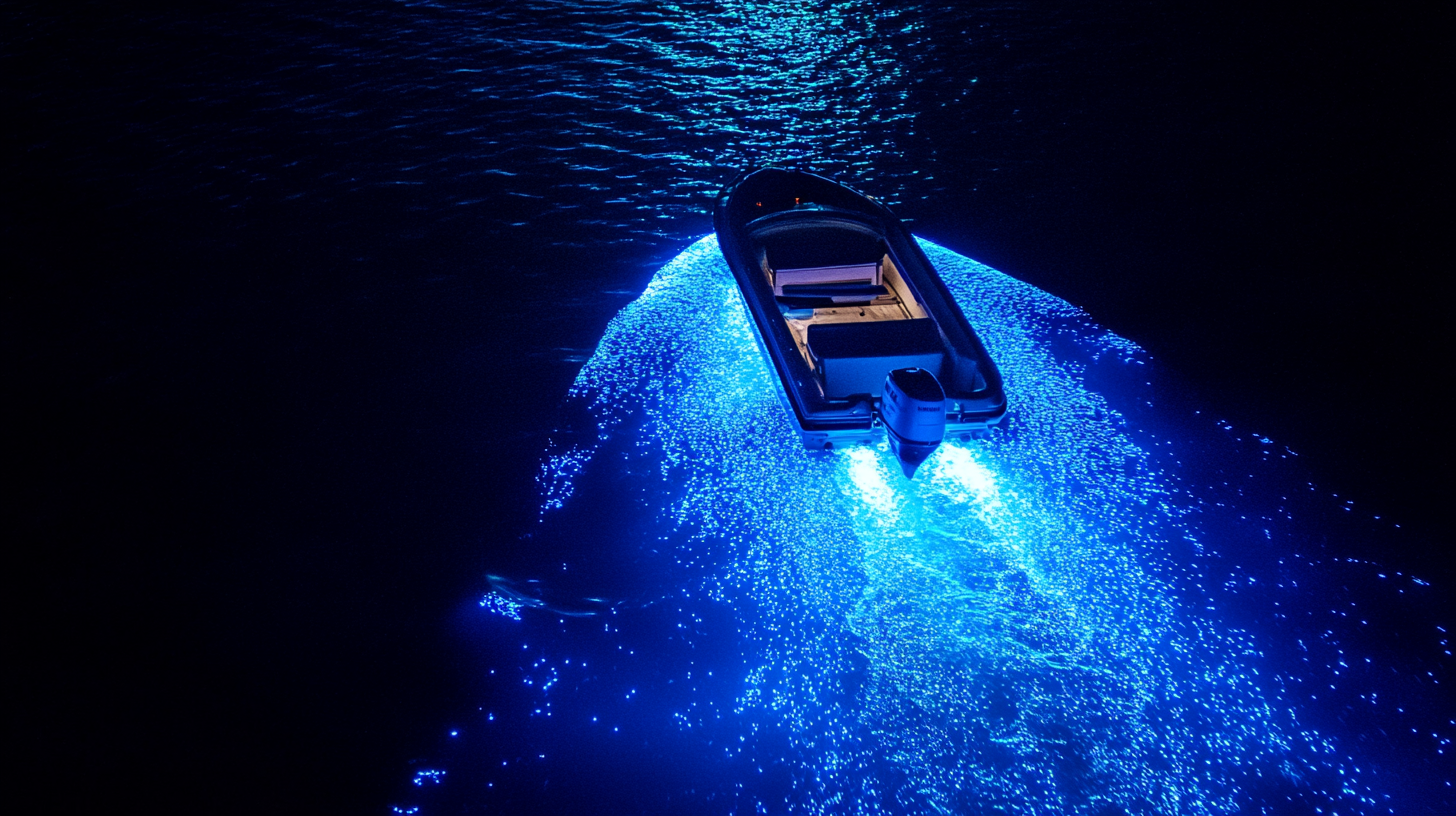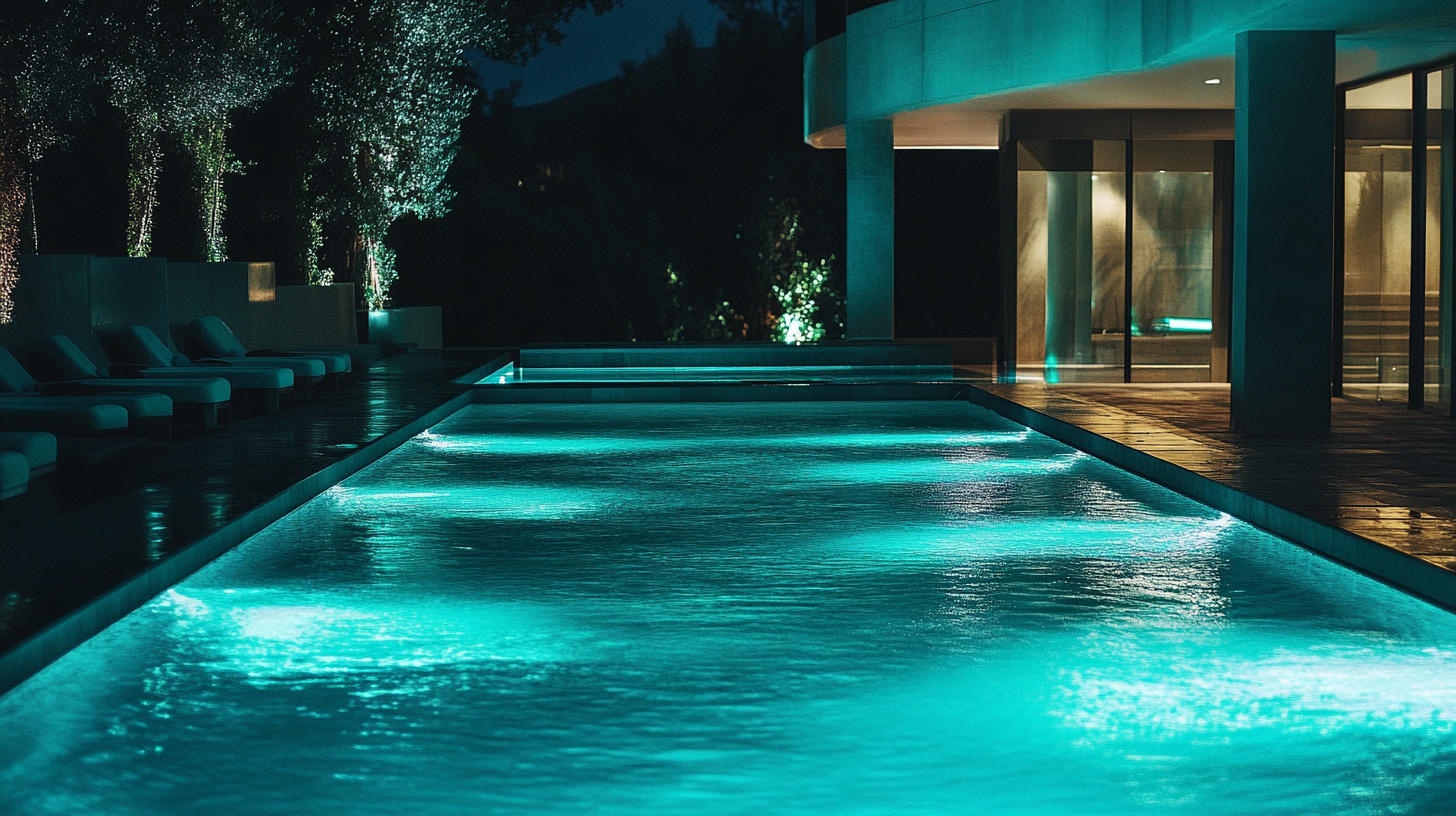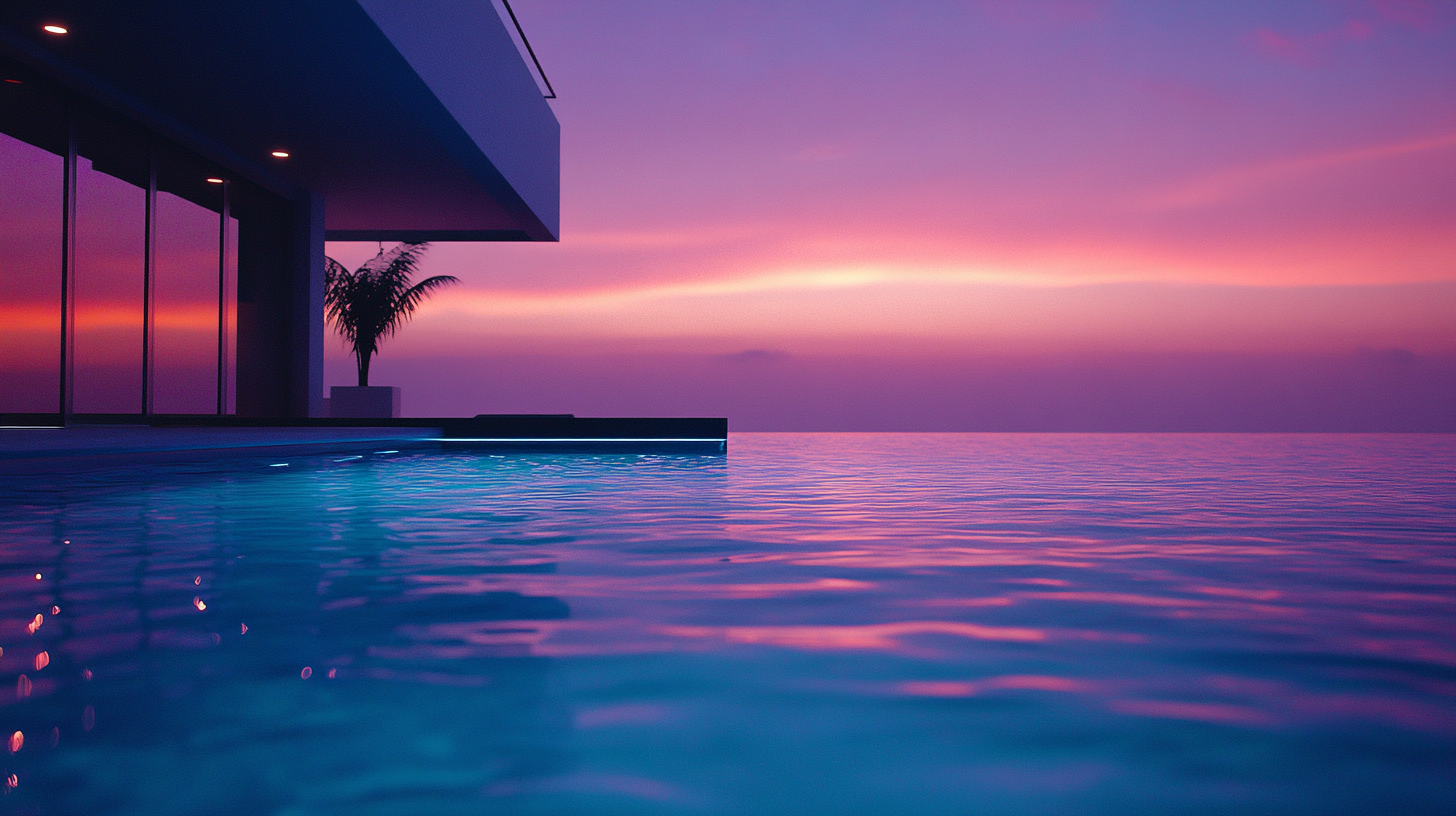How underwater boat lights can help you navigate in low-light conditions
Underwater boat lights are specially designed to provide illumination beneath the waterline, making them essential tools for anyone who enjoys spending time on the water. Whether you’re navigating coastal waters during dusk or cruising under a starlit sky, these lights play a critical role in ensuring that you can see and be seen. They aren’t just for added aesthetics — although they do create a stunning ambiance for nighttime excursions — but also contribute significantly to boating safety in low-light conditions. By casting light not only beneath the boat but around it, these versatile lights enhance your overall visibility, especially in areas where natural lighting is limited.
Another important feature is how they function. Mounted on the hull, underwater lights penetrate the dark depths, allowing you to spot potential obstacles like submerged debris or sandbars. These lights work most effectively when paired with your boat’s above-water lighting system to provide a full scope of visibility in challenging weather or dim settings. The more you understand your boat’s lighting needs, the better you can optimize it to suit various navigation situations.
Enhancing visibility in murky waters
Murky waters can be a challenge even for experienced boaters. Whether you’re navigating in muddy rivers, algae-filled lakes, or coastal areas after a storm, visibility below the surface can drop dramatically. This is where underwater lights truly shine, offering a distinguishing advantage. The unique wavelengths of underwater lights allow them to penetrate through thicker, debris-laden water, providing you with a clearer view of anything lurking below. This increases your confidence during navigation, especially when natural light or external weather conditions won’t cooperate.
By casting light directly into the water, these lights help reduce the guesswork and the need for stopping to check your position. The illumination they provide minimizes reflections and scatter typical of traditional above-deck lighting. This means no more straining to see what’s obstructing your path—your underwater lights will highlight obstacles like rocks, netting, and even schools of fish that you would otherwise miss in low-light conditions.
It’s not just about avoiding potential hazards; these lights also make it easier to follow cues from your GPS or sonar system more effectively. The brighter and clearer your underwater environment, the more precise you’ll be when making those fine-tuned adjustments required for safe boating safety. Gone are the days of worrying about hidden dangers lurking beneath murky water — strategically installed underwater lights can transform that anxious uncertainty into smooth sailing.
Improving safety during nighttime navigation
When the sun dips below the horizon and darkness creeps over the water, navigating your boat safely becomes a much more challenging task. This is where underwater lights really come into their own, offering a boost to nighttime navigation. Many boat owners quickly realize that visibility at night, even with onboard lighting, has its limits. The disadvantage of relying solely on above-deck lights is the potential for glare on the water’s surface or areas of the hull that remain shrouded in darkness. Underwater boat lights help solve this problem by brightening the water directly around your boat, providing a clearer field of vision.
By illuminating the area beneath and around the boat, you’re able to better gauge the depth and spot any shallow areas where you could risk grounding. This is especially useful if you’re traveling through unfamiliar waters and you’re unsure about underwater topography or submerged structures like logs, reefs, or rocks. Your GPS might give you a general idea of where you are, but underwater lights provide the real-time visibility necessary to avoid such potential hazards. This is vital not only for the safety of your boat but also for your passengers.
In addition to helping you avoid physical dangers, underwater lights also contribute to preventing collisions with other vessels. While your above-deck navigation lights are designed to make you visible, underwater lights add another layer of signal that helps to mark where you are in the water. Other boaters will benefit from this added illumination, making their approach toward your boat safer by providing clearer visual signals about your position and movements even in dim or low-light conditions. Remember: nighttime boating requires your boat to be as visible as possible to surrounding traffic, especially in busy waters or during holiday weekends when boating activity tends to spike.
Another benefit of underwater lights during nighttime navigation is that they can help attract marine life, creating a type of safety buffer. Many species of fish and other aquatic organisms are drawn to these lights, making them gather around your boat. While this is often seen as an aesthetic or recreational advantage, attracting marine life can also act as a passive way of alerting you to natural features like reefs or shallower areas where sea life tends to congregate, providing another subtle cue about your surroundings.
The key takeaway is simple: underwater lights are more than a cosmetic addition to your vessel. They’re a valuable tool for improving boating safety during nighttime navigation, giving you the confidence to cruise after dark while reducing the risk of accidents or unexpected surprises. Whether you’re a seasoned navigator or someone new to the boating world, deploying underwater lights can make all the difference in low-light conditions.
Choosing the right lights for your boat
Choosing the right underwater boat lights isn’t just a matter of aesthetics or budget—it’s a crucial decision that can impact both your visibility and safety on the water. There are several factors to consider when selecting the right lights for your boat, including brightness, color, power source, and placement. These aspects will not only enhance your experiences in low-light conditions but also support safe navigation and overall boating safety.
Brightness is one of the first factors to assess. The power of underwater lights is commonly measured in lumens, with higher lumen ratings providing more brightness. For smaller boats or more shallow water environments, something in the range of 600-1200 lumens may suffice. However, if you do a lot of nighttime or deep-water boating, you may want to look at lights with a lumen output of 3,000 or more. A brighter light will penetrate further into the darker depths, illuminating obstacles, marine life, and underwater hazards that could pose risks to your vessel. The type of water you frequently boat in also plays a role here—brighter lights can cut through murky water more effectively, offering better clarity for navigation.
Another important element is the color of the lights. Underwater lights come in a variety of colors—commonly blue, green, and white. Different colors serve different visibility needs. For instance, blue and green light wavelengths tend to travel farther underwater compared to white light, making them more suitable for murky or deep waters. Blue light is often preferred because it provides a calm and aesthetic glow and reflects well off the water surface. Green lights, on the other hand, are known for attracting marine life, and they perform well in both fresh and saltwater. White lights offer a broader scope of illumination and are ideal when you need to maximize visibility in waters that aren’t particularly deep or murky. Deciding the best color for your boating environment can make a significant difference in your navigation experience.
| Light Color | Penetration Depth | Best Use |
|---|---|---|
| Blue | Deep Penetration | Nighttime, Murky Waters |
| Green | Moderate Penetration | Attracts Marine Life |
| White | Shallow Penetration | General Illumination |
Then there’s the matter of selecting the right power source for your underwater lights. Most options available run on either 12V or 24V power systems and can be wired directly into your boat’s main electrical system. However, you’ll need to ensure compatibility with your boat’s overall electrical setup. LED lights are increasingly popular because while they may have a higher initial purchase cost, they are energy-efficient and offer long-lasting performance compared to halogen or xenon alternatives. Additionally, LED underwater lights tend to generate less heat, which is better for the long-term durability of both the lights and your boat’s hull. The power consumption of underwater lights is a critical area to pay attention to since you don’t want to overload your electrical system, particularly when using other vital electronics like GPS or a sonar system simultaneously.
The placement of lights is also key to maximizing their utility. Where you install the lights on your vessel will determine how effectively they aid in navigation and how much ambient illumination they provide. Common placements include the transom, hull, and sometimes even the outdrive area where the propellers are located. For optimal results in low-light conditions, spaced lights along the transom will provide a broad wash of light across the water, illuminating the area directly behind your boat. Meanwhile, placing additional lights along the bottom of the hull will cover a greater underwater area, providing visibility for the entire side of your boat.
Many boaters also prefer retractable or removable lights for easier maintenance and to avoid permanent effects on the hull. These systems can be especially convenient for seasonal boating, allowing you to retrofit or upgrade your lights depending on the type of environment or trip you’re planning.
Ultimately, choosing the right underwater boat lights means balancing your needs for brightness, color, ease of use, and energy consumption. Well-chosen and strategically placed lights contribute significantly to safe navigation and a more enjoyable boating experience in any low-light condition.
Maintenance tips for long-lasting performance
To ensure your underwater boat lights maintain peak performance and last as long as possible, regular maintenance is essential. Given that these lights operate in an environment that exposes them to saltwater, debris, and various underwater hazards, their longevity largely depends on how well you take care of them. Keeping your lights in optimal condition not only contributes to better visibility but also enhances boating safety during navigation in low-light conditions.
One of the first steps in maintaining your underwater lights is periodic cleaning. Marine environments can quickly cause buildup due to algae, barnacles, salt, and other debris clinging to the lights’ surface. Over time, this layer can significantly dim your lights, reducing their effectiveness. To avoid this, aim to inspect and clean your lights regularly, especially if your boat stays docked for long periods. Cleaning can usually be done with a soft brush or cloth and a mild solution designed for marine use. Avoid using abrasive materials, as these can scratch the lights’ lenses, affecting both their efficiency and appearance.
Another critical factor is corrosion prevention. Saltwater, in particular, is highly corrosive to electrical components. Investing in high-quality, corrosion-resistant lights is the first line of defense, but applying a protective coating to metal parts can also help. Many products are available specifically for marine use, providing layers of protection against the corrosive effects of saltwater. Also, it’s a good idea to periodically check the housing and fittings for signs of rust or corrosion. Catching these issues early can prevent further damage and keep small maintenance tasks from turning into costly replacements.
Electrical connections also deserve special attention. The underwater environment presents unique challenges for any wiring setup. Regularly inspect the wiring connected to your underwater lights for signs of fraying, corrosion, or loose connections. Pay particular attention to the seals around any entry points where water could infiltrate. These seals should be intact and tight to avoid short circuits or malfunctioning lights that could leave you in the dark mid-navigation. If you’re not comfortable performing electrical inspections on your own, a marine electrician can help ensure everything meets safety standards and performs efficiently.
Maintaining the placement and positioning of your underwater lights is another important consideration. Over time, with waves, marine life, or even while docking, lights can shift or become misaligned. This misalignment reduces their effectiveness by disrupting their intended angle or direction, limiting how much of the surrounding water they illuminate. Check the mounting brackets periodically and tighten any loose screws or fasteners to ensure your lights are always positioned for maximum impact.
If you’re using LED underwater lights, you’re already ahead of the game in terms of longevity and durability. However, even LEDs have limits. Over time, continuous use, environmental exposure, and natural wear and tear can diminish their brightness. Keep an eye on how your lights are performing, and if you notice a significant drop in brightness, it might be time to consider either cleaning or replacing the bulbs. Thankfully, LEDs are designed to last much longer than traditional halogen or xenon bulbs, so this shouldn’t be a frequent concern, but it’s always good to be prepared.
Lastly, for those who boat in cold or extreme conditions, keep in mind that sudden temperature changes can also affect your lights. Thermal expansion can cause seals or glass to crack, potentially letting water inside. If you’re operating in freezing temperatures, make sure to do thorough checks before and after each use to ensure that no damage has occurred. Similarly, boats sitting in extremely hot sun for extended periods can experience UV damage to plastic or rubber components. Using boat covers or shades when docked can help mitigate this risk.
Regular attention to cleaning, corrosion prevention, electrical maintenance, alignment, and temperature effects will ensure your underwater boat lights perform well under any conditions. These small but important tasks will go a long way in maintaining both the functionality of your lights and the overall safety of your nighttime boating adventures.


